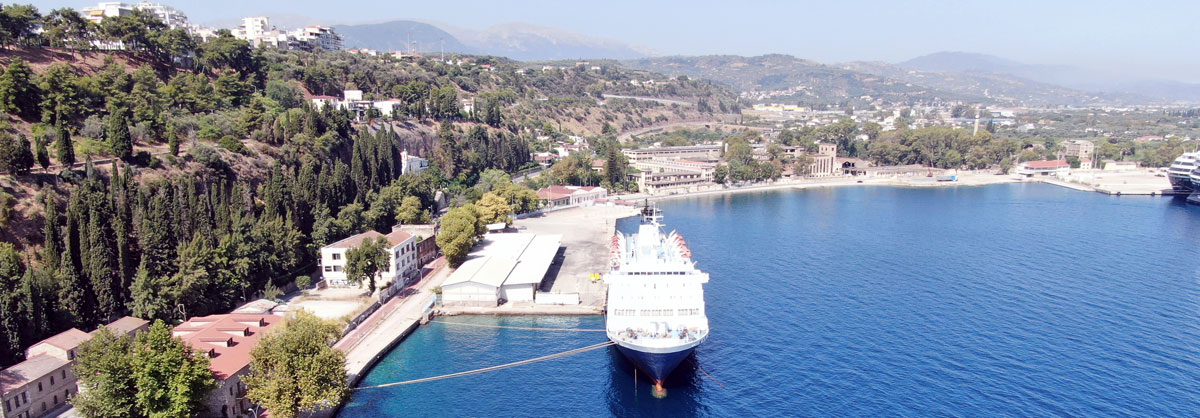
Aigio harbour
Nestled between the blue waters of the Gulf of Corinth and the rising slopes of Mount Panachaikon, Aigio is one of Greece’s oldest continuously inhabited towns. With a history stretching back more than three millennia, it has been a stage for myth, prosperity, decline, and rebirth — a microcosm of the Peloponnese itself.
Ancient Times: From Mycenaean Roots to the Achaean League
Archaeological traces show that the area around modern Aigio (ancient Aigion) was inhabited since the Late Neolithic and Mycenaean periods. The fertile plain of the Vouraikos River, rich in water and vines, sustained early settlements that later coalesced into the city of Aigion. In Homer’s Iliad, Aigion is mentioned as one of the cities under Agamemnon’s influence — a testament to its Bronze Age significance.
By the 8th century BC, Aigion had become an important member of the Achaean dodecapolis — the League of Twelve Cities that defined the early identity of Achaea. It prospered as a trading center and a cultic hub. The city’s acropolis stood over the sea, and its temples honored Zeus Homagyrios (“the Assembler”) and Artemis, attracting pilgrims from all over northern Peloponnese.
In the Classical period, Aigion held a central role in Achaean politics. The league’s assembly often convened here, and the city served as a meeting point for decisions affecting the entire region. When the Achaean League was revived in 280 BC, after centuries of eclipse, Aigion was chosen again as its first capital — a symbol of both continuity and renewed strength in the face of Macedonian dominance. It was in Aigion that the League’s great statesmen, like Aratus of Sicyon, forged the alliances that briefly united much of the Peloponnese.
Under Rome: Continuity and Quiet Prosperity
In 146 BC, Greece fell under Roman control, and the Achaean League was dissolved. Yet Aigion, unlike some rebellious cities, was spared destruction. It remained a small but lively coastal town under Roman rule, its port serving as a link between Corinth, Patras, and the Ionian world. The cult of Zeus Homagyrios continued to be observed, and local wine and olive oil were exported throughout the Empire.
Roman villas, baths, and mosaics have been discovered in the area, suggesting that a prosperous elite lived here during the Imperial period. The surrounding countryside, dotted with farmsteads and sanctuaries, reflects a stable rural economy that persisted into late antiquity.
Byzantine and Medieval Eras: Faith and Survival
With the division of the Roman Empire, Aigion became part of the Byzantine realm. By the 6th century AD, the city — now sometimes called Vostitsa, perhaps from the Slavic word vostok (“east”) or from the abundance of gardens (vostan in Slavic) — was known as a fortified coastal settlement. The nearby monastery of Panagia Tripiti, built into a cliff above the sea, became a major pilgrimage site and remains so to this day. Legend holds that a shepherd discovered the miraculous icon of the Virgin in a spring there — a symbol of divine protection during centuries of turbulence.
During the medieval centuries, Aigion endured waves of invasions and natural disasters. The Slavs, Saracens, and later the Franks of the Principality of Achaea all left their mark. After the Fourth Crusade (1204), Aigion was incorporated into the Frankish dominion, passing later to the Despotate of Mystras and then, in 1460, to the Ottoman Turks.
Under Ottoman rule, Vostitsa was a modest provincial town, known for its fertile lands, citrus groves, and vineyards. Venetian raids occasionally disrupted the coast, but the town endured. The coexistence of Greeks and Turks, though uneasy, allowed local trade and craftsmanship to continue.
Revolution and the Birth of Modern Aigio
In the late 18th century, Vostitsa became a center of growing national consciousness. It was here, in January 1821, that a secret and fateful meeting of local leaders took place — the Synaxis of Vostitsa. The participants debated the coming revolt against Ottoman rule, marking one of the final preludes to the Greek War of Independence. A few months later, revolutionary banners were raised across Achaea.
The town suffered reprisals during the struggle, but with liberation, it reclaimed its ancient name — Aigio. The new state brought revival. Rebuilt in neoclassical style during the 19th century, Aigio’s economy flourished through agriculture and maritime trade. The region’s famous currants (dried black grapes) became its golden export, linking Aigio to the ports of London and Marseille. Warehouses and merchant houses from this era still line the old waterfront, silent witnesses to the prosperity of the “Black Gold” trade.
Modern Aigio: Earthquakes, Recovery, and Renewal
Aigio’s modern history has been marked by both tragedy and resilience. The devastating earthquake of 1888 destroyed much of the town, but it was swiftly rebuilt with broader streets and handsome buildings. In 1995, another powerful quake struck, once again testing the community’s strength — yet Aigio endured.
Today, Aigio is a serene coastal town that balances its maritime heritage with a modern pace of life. The nearby villages produce excellent wines under the Aigialeia appellation, continuing an ancient viticultural tradition. Visitors stroll along the shaded seafront, explore the Byzantine Panagia Tripiti and the Archaeological Museum housed in a restored neoclassical mansion, and look out over the Gulf — the same waters where ancient Achaean ships once sailed.





